
.
If you have any comments, observations, or questions about what you read here, remember you can always Contact Me
All content included on this site such as text, graphics and images is protected by U.S and international copyright law.
The compilation of all content on this site is the exclusive property of the site copyright holder.
What a brutal winter this has been. Snow. Then some more snow. Just for a change, another "gift" of snow from the weather gods. (That was sarcastic, in case you didn't know.) It's been cold, overcast, and windy. The weather has been very chilly, with the temperature some nights down to single digits before struggling back up into the 20s Fahrenheit in the daytime. Once we got a good heaping of snow, the temperature rose so it rained. Which the snow soaked up like blotting paper. After which it got cold, again, and the slush turned to ice. Do I sound like I'm complaining? Absolutely!

So an invitation to come to The New York Botanical Garden for the press preview of their annual orchid show was just what's needed to drive the winter blues and blahs away. Even the theme, Key West Contemporary, starts up thoughts of sunshine, balmy breezes, tropical colors, perhaps a cocktail - and, of course, orchids.
Orchids are an amazingly complex, advanced group of plants, with 25 to 30,000 species and more than 200,000 hybrids. They're found everywhere, on all continents except at the poles. Some grow on the ground - those are terrestrial orchids. Others festoon themselves on trees - the epiphytes. Tiny little ones with flowers the size of a pinhead. Others, obviously, much larger. Some are rather sneaky. Their flowers mimic a female insect so when the male grabs on for a bit of sex the pseudo-copulation fertilizes not an insect but instead pollinates the next orchid he visits. And let us not forget vanilla, the delectable flavoring we get from an orchid.

Just right now, though, I find the pristine white flowers of the dendrobium (above)
and the white phalanopsis (below) too much of a reminder of the winter outside.
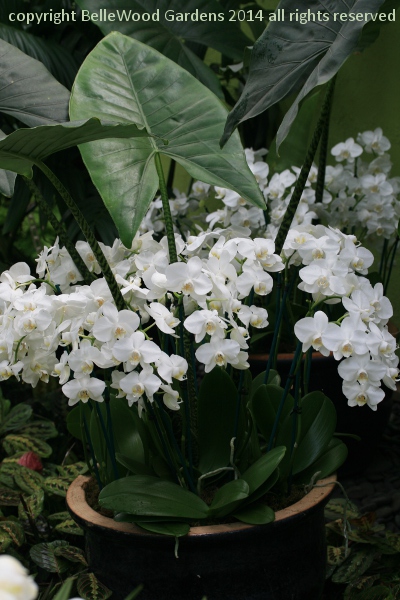
And there are so many colors other than white, so many fantastic shapes available in the diversity of orchids here on display in the Enid Haupt Conservatory.
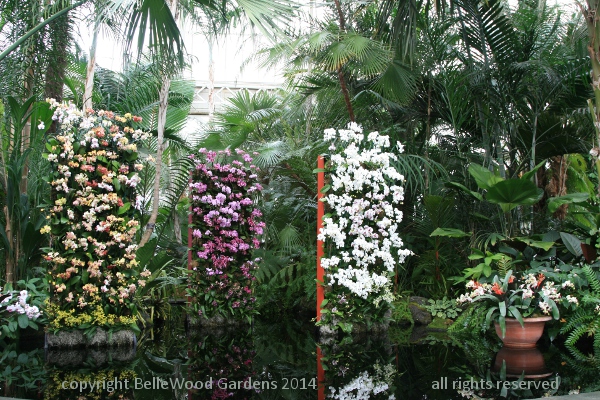
As soon as you enter the enormous glasshouse and stand in the Palm Court, its dome rising high overhead there are fabulous orchids to enjoy.
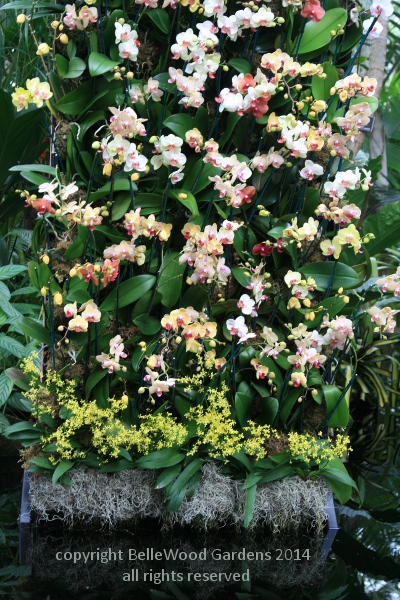
We start our tour here, at the reflecting pool and, turning our backs to the exhibition gallery, enter the tropical rain forest wing.
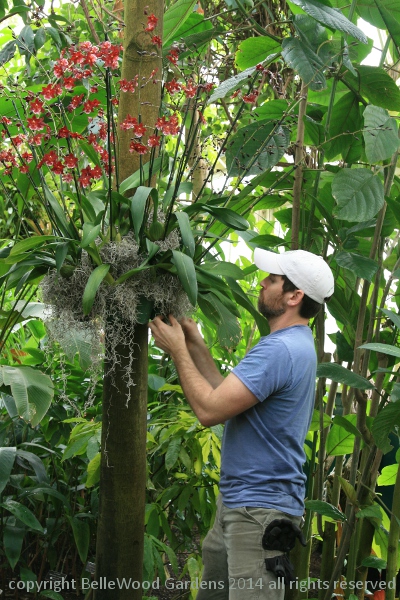
where the last, refined details of the orchid show are being added to the permanent plantings.

Numerous people are involved with the show. The guy who frets over the details is Marc Hachadourian. He's the manager of the Nolen Greenhouses for Living Collections at the Garden and supervises the care of the botanical collections, including an extensive orchid collection and exhibition plants. Marc now serves in a curatorial capacity for the orchids, having moved on up from his first job as horticulturist for the collection.
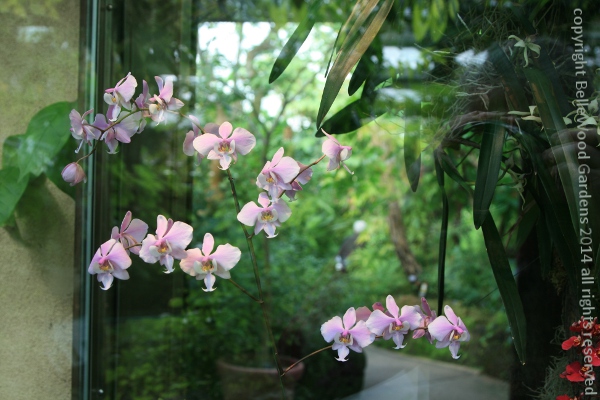
Marc has a strong interest in the conservation and cultivation of many groups of plants. He's a natural to oversee the CITES Rescue Center Program, helping to take in and rehabilitate plants that have been illegally imported, such as this charming little pink-flowered phalanopsis. Someone tried to smuggle it into the country. Orchid species , you see, are Appendix I in the Convention on the International Trade of Endangered Species. That means that "Appendix I species may not be imported and exported for commercial purposes unless they are artificially propagated and authorized by both CITES export and import permits, and with the exception of seedlings or tissue cultures obtained in vitro, in solid or liquid media, when transported in sterile containers. " It is still owned by the government, but it has been cared for here at the New York Botanical Garden, ever since 2006.
We circle through the conservatory - rain forest, temperate rain forest, down through the tunnel, the desert, and then
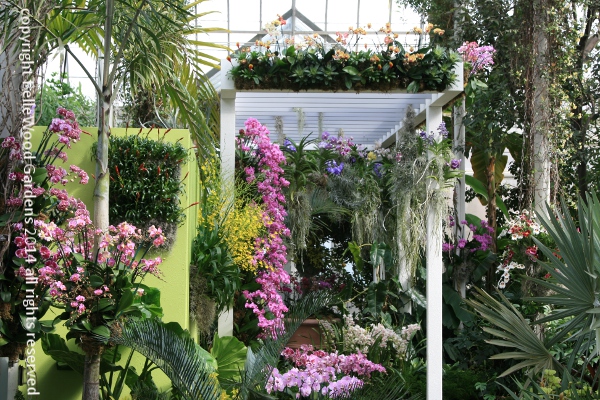
arrive in Key West, Florida. Contemporary in design, the sound of moving water, tropical colors, and a geometry of walls and arbors overhung with orchids.
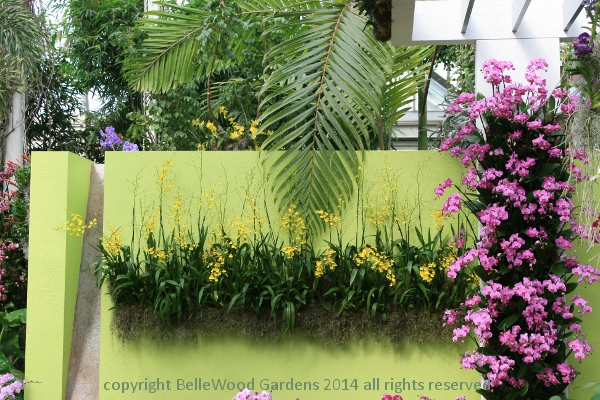
Take a closer look,
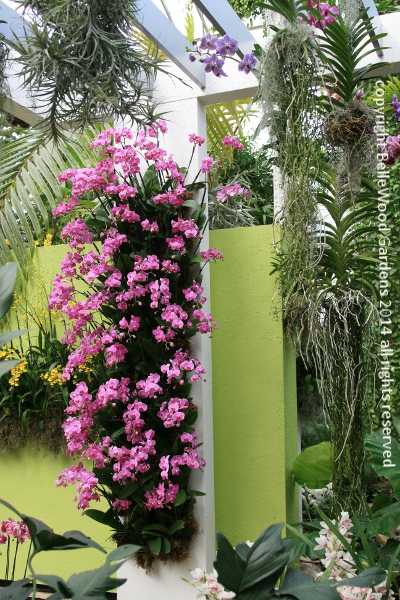
closer yet. Winter? What winter? I'm in Florida!
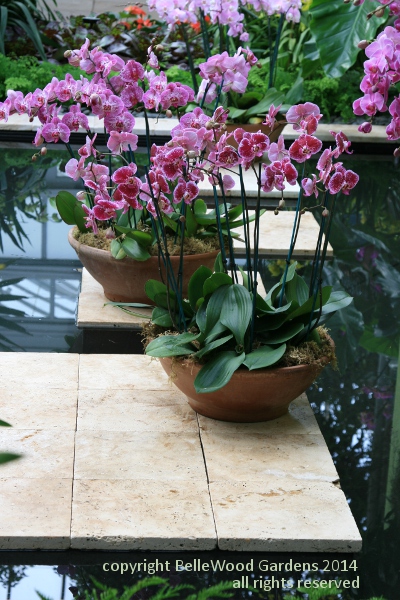 . . . .
. . . . 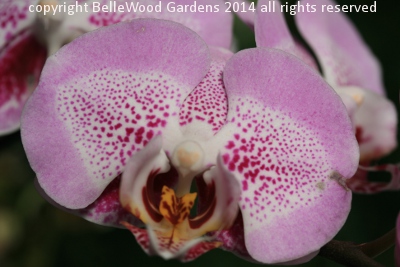
.

Phalanopsis, commonly called moth orchid, are popular for their ease of indoor cultivation.
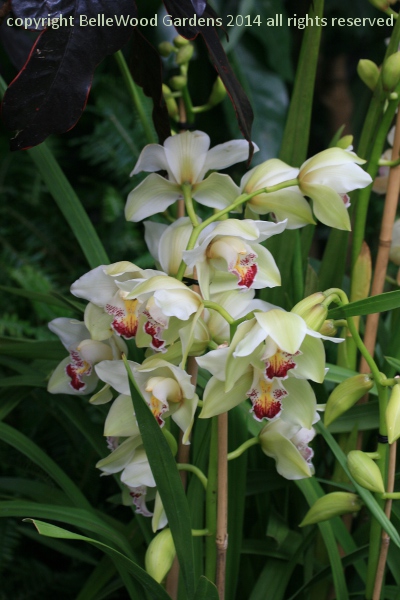
And then there are cattleya, ruffled petals, 3-dimensional look, and a diversity of colors
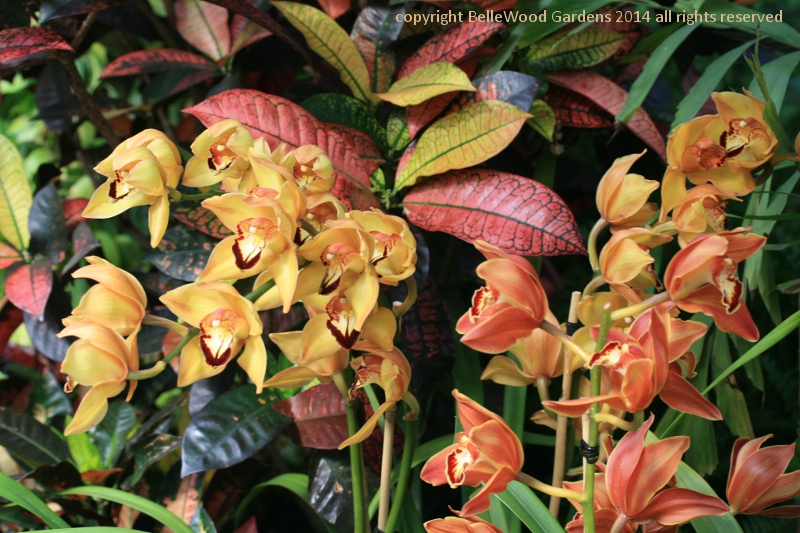
as here, where orchids in both amber gold and rich russet hues are paired with crotons
whose leaves reflect the same assortment of colors.
The 2014 Orchid Show is open from March 1st through April 21st. The exhibition will look magnificent whether you go early or just before it closes, as the Garden's dedicated staff reviews the show, grooms plants, and swap out tired specimens for bright fresh ones. An All-Garden Pass Includes admission to the Enid A. Haupt Conservatory, tram tour, and more. Prices may vary at certain peak times. For exact prices, access the ticket site and select the date of your visit and ticket types.
Easily reached by Metro-North train or by car, The New York Botanical Garden is open Tuesday through Sunday, and certain holiday Mondays.
Whether there is snow on the ground or it has all vanished with the advent of Spring (let it only arrive soon!) there's always something to enjoy, out on the grounds or in the Conservatory. Take a Key West Contemporary vacation in the Bronx at this year's orchid show. You'll be glad you did.

Back to Top
Back to February 2014